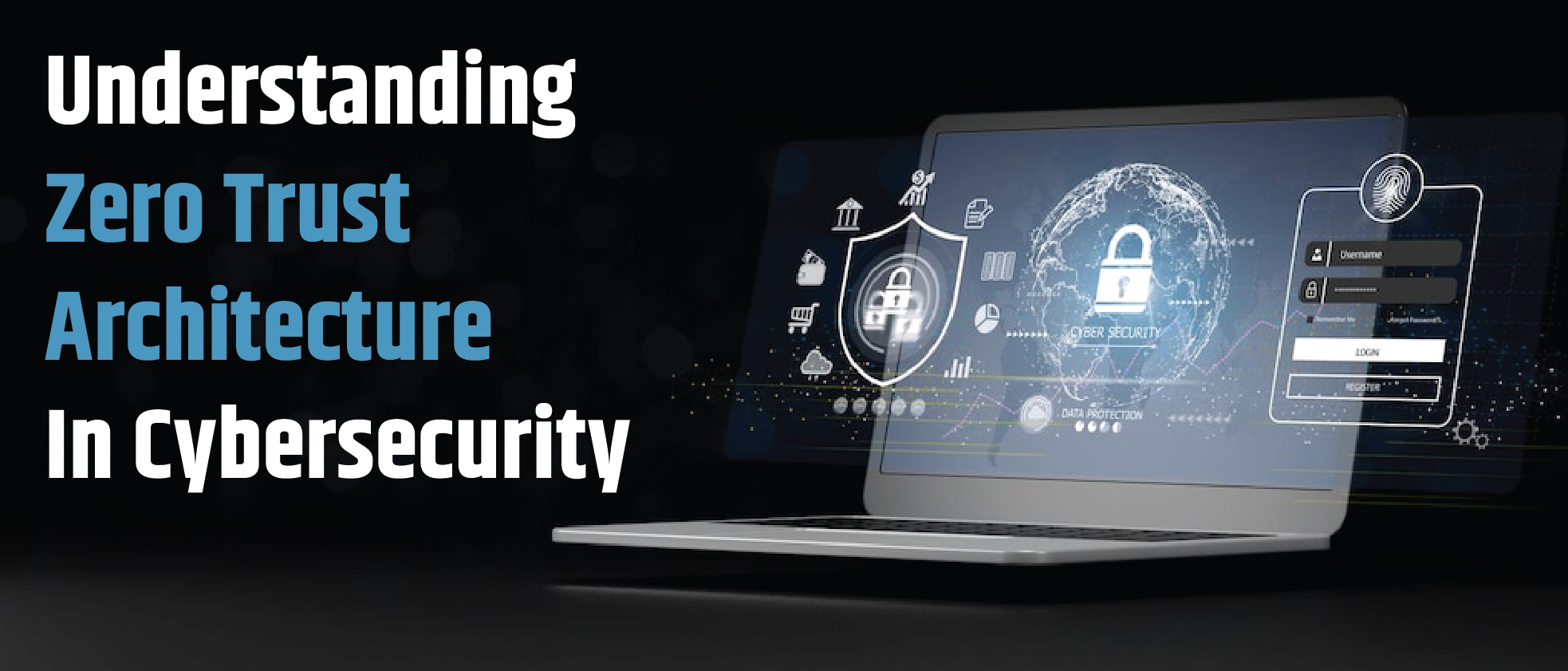Understanding Zero Trust Architecture In Cybersecurity

Introduction:
As the digital landscape becomes increasingly interconnected, cyber threats are becoming more sophisticated. Organizations no longer have enough protection from cyber risks using traditional security models, such as perimeter-based approaches. In this case, Zero Trust Architecture (ZTA) is needed. ZTA focuses on trustworthiness verification for all entities seeking access to an organization's resources, including both internal and external entities. In this blog, we'll examine Zero Trust Architecture's fundamentals, its significance in cybersecurity, and the benefits it brings to organizations worldwide. Relevance of ZTA in Cybersecurity As a security framework based on the principle of "never trust, always verify," Zero Trust Architecture emphasizes authentication and authorization of users, devices, and applications, regardless of their location, unlike traditional models that grant broad access based on network location. It is essential to adopt this mindset in an era of cloud computing, remote work, and BYOD (Bring Your Own Device) environments, where conventional perimeter defences will no longer work.
Key Principles and Components of Zero Trust Architecture:
- Verifying Identities:Before access can be granted, each user and device needs to be correctly identified. Multi-factor authentication and strong password policies must be implemented.
- Least Privilege: Access is limited to the minimal level necessary for a user to carry out their job duties. This minimizes the impact of a breach on the network and reduces lateral movement.
- Micro-Segmentation: The network has been divided into smaller segments that are isolated, which makes it harder for an attacker to move laterally after breaching one segment.
- Continuous Monitoring: ZTA uses real-time monitoring, analytics and other tools to detect anomalies and suspicious activity that could indicate a potential security threat.
- Access Control: Access to the device is granted dynamically based on contextual factors such as the user's behaviour, location and health.
Benefits of Implementing ZTA in an Organization's Cybersecurity Strategy
- Enhanced Security:By continuously verifying authenticity, ZTA significantly reduces the attack surface and reduces the risk of unauthorized access.
- Enhanced Data Protection: Implementing ZTA ensures that only authorized users and devices can access sensitive data, providing an additional layer of protection against data breaches.
- Simplify compliance: ZTA adapts to many regulatory frameworks and can streamline your company's compliance process
- Scalability and Flexibility: ZTA supports cloud environments, remote workers, and dynamic networks, and is well-suited for modern business infrastructures.
- Incident response:Continuous monitoring and detailed access logs enable organizations to respond quickly to security incidents and conduct thorough investigations.
Real-world Examples of Successful Zero Trust Implementations
- Google's Implementation: Google, with Beyond Corp, adopts Zero Trust principles, a security model that allows employees to securely access resources from anywhere without relying on traditional VPNs. Did.
- The State Bank Of India (SBI): The State Bank of India (SBI) bank adopted ZTA as a cyber-security strategy to better protect sensitive data and critical infrastructure.
Challenges and Considerations When Adopting a Zero Trust Architecture
- Complexity: Implementing ZTA involves significant changes to an organization's existing infrastructure and security policies and requires careful planning.
- User Experience: Finding the balance between security and user experience can be difficult, as strict security measures can hinder workflow efficiency.
- Legacy Systems:Organizations with legacy systems may face integration issues when implementing ZTA.
- Education and Training: Employees and IT teams should be educated on ZTA principles and how to work effectively within this new security framework.
Conclusion:
In summary, Zero Trust architectures represent a fundamental shift in a cybersecurity strategy that focuses on identity verification and access control. By adopting ZTA, organizations can significantly improve their security posture, protect sensitive data, and respond effectively to emerging cyber threats. While the transition may come with its challenges, the long-term benefits of Zero Trust architectures are a significant investment for organizations looking to build a secure future in an ever-changing cyber environment.
ANA Cyber Forensic Pvt Ltd is one of the leading Indian cyber security services companies that provide best solutions to protect your business form security threat. For more information call us at +91 – 90110 41569
Contact
For more information on how we can help you secure your data, get you compliant and protect your business, please complete the form below and one of Information security / Cyber Forensic expert and Compliance specialists will respond to you as soon as possible.


